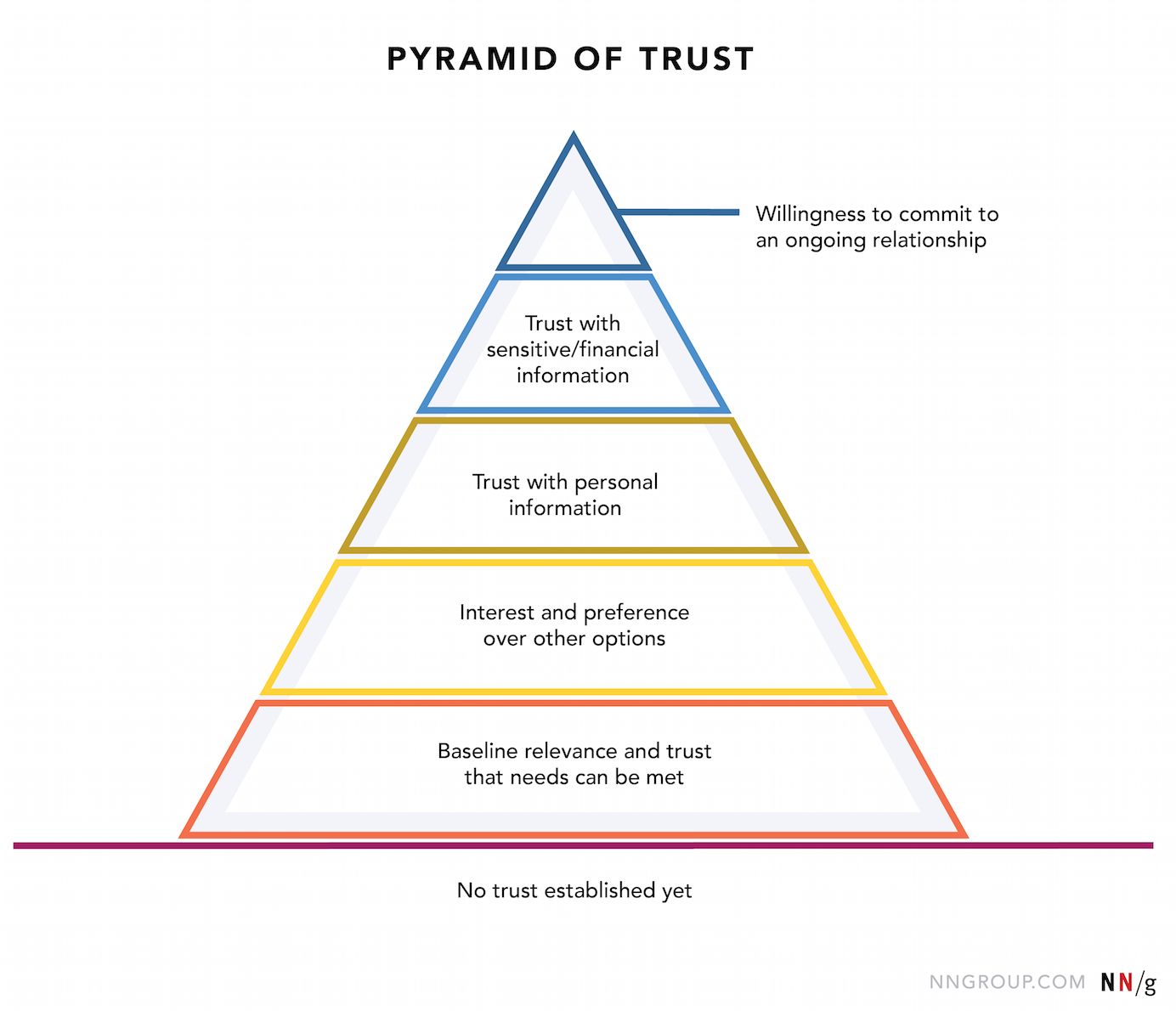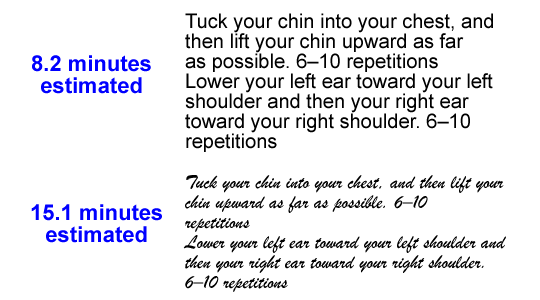Neuromarketing for Law Firms: Hack Your Potential Clients’ Brains

When you’re trying to plan marketing for your law firm that truly moves your potential clients, you can consult numerous sources to guide you — website audience data, survey results or the well-considered opinions of your marketing strategist.
If only you could go deeper, looking directly into your prospects’ brains.
Well, in a way, you can.
Your firm can draw from the field of neuromarketing to make decisions and evaluate the effectiveness of your strategies for acquiring new clients.
Neuromarketing is a young discipline — it’s only been around for two decades — that applies neuroscience to marketing. It’s based in part on direct measurement of people’s physiological reactions to marketing messages, using EEG and fMRI technology.
But you don’t have to hook someone up to a brain scanner to benefit from neuromarketing. In this post, we’ll explain how you can apply insights neuromarketing has already gathered from past studies to your firm’s legal marketing.

3 Neuromarketing Models for Lawyers
A few mental models, drawn from neuromarketing, can increase your understanding of how to foster the most favorable perceptions of your law firm’s brand — and attract more leads and intakes.
These models give you a way of thinking deeply about why people respond to your legal marketing the way they do.
Author, blogger and columnist Roger Dooley presented the models during a day-long master class on neuromarketing at a recent Pubcon internet marketing conference, which Firmidable attended.
Dooley highlighted three simple, eye-opening approaches to better marketing campaigns. All three have immediate applications for law firm marketing:
1. Thinking Fast & Slow
Nobel laureate Daniel Kahneman popularized the idea of separating people’s modes of thinking into two sides:
- Fast, emotional, reactive thinking
- Slow, intellectual, reflective thinking
People do most of their thinking in “fast” mode, which means emotions drive decision-making.
For your legal marketing, it’s more important to address how your advertising makes your potential clients feel than to instruct them on the details of the legal process.
This may mean you focus less on being a “SuperLawyer” and more on being recognized as a member of the community who inspires trust and confidence.
You don’t have to ignore the intellectual and technical sides of being a lawyer, but use them as supporting evidence in a process of moving people closer to feeling comfortable about hiring your firm.
2. The Pyramid of Trust
To visualize that movement toward hiring a lawyer, it can be valuable to consult the “Pyramid of Trust” by the Nielsen Norman Group, experts in user experience design.
In many cases, if a potential client is hesitating to call your firm, it’s because of a mismatch in the amount of trust you’re asking of them and the amount of trust you’ve earned.
People form their initial, baseline level of trust almost immediately — less than a tenth of a second on a website.
But you have to achieve greater trust before someone becomes willing to give you personal information such as a contact number.
You have to climb even higher on the trust pyramid before they’ll share sensitive information of the kind law firms need to determine if a case is viable.
To eliminate the barriers that prevent someone from calling your firm, look at how much contact they’ve had with your firm, where they likely are on the trust pyramid, and how much your firm’s marketing messages are asking of them.
This helps you refine what to say for each step your prospect takes toward your door.
A client sees a TV ad, and it helps establish you as authoritative and approachable. Next she sees an article you wrote online, and it further solidifies your image.
After multiple touchpoints, when she comes across your firm’s digital ad asking her to call you, you’ve built up enough trust that she’s ready to reach out.

3. The Persuasion Slide
Once you’ve established enough trust with a prospect, your next step is encouraging them to act.
Roger Dooley’s “Persuasion Slide” provides a framework for identifying those final obstacles your marketing must overcome.
For people with a legal problem, the initial motivation to resolve a financial loss or a dispute is strong. But it still takes more encouragement to make the jump to contacting a particular lawyer.
In every case, prospects will need a “nudge” down the slide — like a well-placed call to action on a digital ad’s landing page — triggering them to respond the way you want, by emailing or calling you.
Experts on turning web perusers into buyers will often focus on your firm’s website design to provide the nudge.
But that final bit of encouragement can come from the writing on your site or many other aspects of your marketing plan.

The Limits of Neuromarketing
Understanding what people are thinking certainly makes for potent marketing.
Before we further explore how to apply neuromarketing to your law firm, let’s stop to consider one point: just how new this field is. Dooley started his talk by noting that it’s still a messy field of study.
The earliest neuromarketing only dates to the mid-1990s, when Gerald Zaltman of Harvard Business School started to apply modern psychoanalysis techniques to the marketing of companies such as Coca-Cola.
Daniel Kahneman, author of Thinking, Fast and Slow, has openly fretted that the results of experiments in fields like neuromarketing can be difficult to replicate.
And, of course, law firms aren’t going to run those kinds of experiments themselves.
But Dooley suggests you can still use the results of established studies. In fact, that’s exactly what big brands do.
Om Marwah, head of neurobusiness at Walmart, doesn’t run direct neuromarketing studies either.
Instead, he combines revenue and behavioral data collected at Walmart with models from the neuromarketing literature, creating strategies for the massive retailer to increase sales.
Applying Neuromarketing to Your Firm’s Digital Marketing
The most obvious place for your law firm to use neuromarketing is in your website and online ads.
You can apply neuromarketing in three phases: design, copy and overall campaign plan.
Design
Marketers use the visual layout of websites to make pages appear understandable and trustworthy.
For most users, it takes just 50 milliseconds to identify that they’re on the right page.
For a Google search of “Workers’ Compensation Lawyer in San Diego,” make sure a user who clicks your result sees those words parroted back at them in a large headline. That signals they’ve reached someone who can help immediately — with exactly what they’re looking for.
You can test the clarity of your site using a simple exercise: The five-second test. Show someone unfamiliar with your site one page for five seconds. Ask the person what the page is about and see how well they get it.
One of the best ways to make your site easy to read is choice of typography.
If a reader sees a complicated font, they’ll also think what you’re asking them to do is harder.
Take this experiment, which asks people to estimate how long it would take to perform the task described on the right:

Copy
Alongside the visuals, the words themselves matter too.
Marketers spend a lot of time on their copy, for good reason. The right words instill trust and loosen resistance to action.
One way to create trust with your writing is to use a quirk of the human mind called the narrative fallacy: People are inclined to construct and respond to stories; they’ll even perceive narratives in an unconnected series of facts.
A realistic story helps your potential clients see themselves benefiting from your law firm’s services.
Tell the story in simple terms. People associate high risk with words that are difficult to say and low risk with words that are easy to say.
Readers will even give you more credit for your intelligence when your writing is straightforward. See this cheekily titled academic paper: “Conse quences of Erudite Vernacular Utilized Irrespective of Necessity: Problems with Using Long Words Needlessly.”
quences of Erudite Vernacular Utilized Irrespective of Necessity: Problems with Using Long Words Needlessly.”

Marketing Campaign Plan
Attractive design and engaging copy can only get so far without a solid marketing campaign plan.
One key principle is how often prospects see your digital ads. Increasing the frequency also increases the chances that the user will click the ad.
And frequency works best when you’re giving the audience something of value. Neuromarketing has shown that when people receive a small favor, they’re more inclined to give something in return.
For example, Dooley talked about a study on restaurants leaving mints with the check as a way to make their patrons feel like they’re getting something free. If a waiter leaves one mint with the check, he can expect his tip to increase by 3%. If he leaves multiple mints, tips go up 20%.
At Firmidable, we’ve often seen neuromarketing techniques like this backed by results from our legal marketing plans.
Law firms can increase potential clients’ feelings of reciprocity by adding more helpful, informative, free legal content to their websites that doesn’t overtly try to sell their services. They can also offer gestures such as free initial consultations.
Offering a substantial selection of useful information primes potential clients to view your firm favorably.
When presidential election campaign officials for Ross Perot were setting up focus groups, they unintentionally discovered the power of the neuromarketing concept of priming.
They showed one group of voters a video of Perot speaking. Afterward, the voters received information about his credentials.
They showed another group Perot’s biography and platform first. Then the voters watched him speak.
The campaign workers asked both groups to rate how qualified they felt Perot was for the presidency.
What the Perot campaign found was that priming matters — because it increases exposure to the subject and builds trust.
The group that was given a biographical narrative about Perot first, then saw him speak, rated him higher than the group that went straight to the speech and received the information later.
If you want to factor the way people think into your firm’s marketing, your best bet is first to prime your potential clients with story-based material about your firm. Then, sell them on hiring you.
How to Learn More about Neuromarketing
Interested in further exploring neuromarketing for your law firm? You can read in-depth arguments connecting audience behavior to psychological and physiological forces. The following are just a few of the books Dooley cited in his master class:
- Drunk Tank Pink – Adam Alter
- Predictably Irrational – Dan Ariely
- How Emotions Are Made – Lisa Feldman Barrett
- Influence: The Psychology of Persuasion – Robert B. Cialdini
- Brainfluence – Roger Dooley
- Thinking, Fast and Slow – Daniel Kahneman
- Don’t Make Me Think – Steve Krug
- Spent – Geoffrey Miller
- The Design of Everyday Things – Don Norman
- Sell With a Story – Paul Smith
- Nudge – Richard Thaler & Cass Sunstein
- The Moral Molecule – Paul J. Zak
Applying concepts from neuromarketing helps you view your firm’s marketing through the conscious and subconscious perspective of your potential clients.
It could give you some new strategies for attracting new clients. If you need a “nudge” to strengthen your law firm’s marketing, email us at Firmidable or call today: 504-525-0932.
Firmidable is the nation’s best legal marketing agency. We know more than anyone else about how Americans choose their lawyers.
